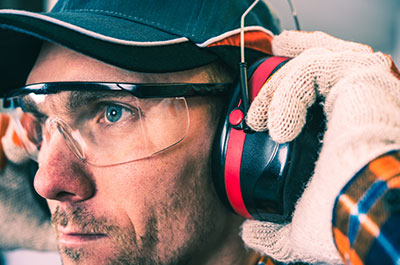As the weather gets warmer and we all start spending more time in the sun, it’s important to stay vigilant about skin cancer prevention. (We know, this probably isn’t the first thing you want to think of when there’s finally a day of sunshine!) And you might already know that it’s important to check yourself for suspicious-looking moles that could be skin cancer. Maybe you even go to the dermatologist for a yearly skin check. But you might not know that you can get skin cancer in unassuming, concealed places—even in places where the sun doesn’t hit.
“Anywhere you have skin, you can get skin cancer,” says Anna Axelson, M.D., a dermatologist at Henry Ford Health. The type of skin cancer you can get differ based upon where it is. You’re more likely to get basal and squamous cell carcinoma in sun-exposed areas like your arms, legs, back, shoulders and face. Sun-exposed areas that you might overlook include:
- Your scalp. “Several of my patients have had skin cancers found by their hairdressers,” says Dr. Axelson. “When you have a hair appointment, it’s not a bad idea to have your stylist check your scalp.”
- Eyelids.
- Lips.
- Ears.
- Toes.
- Backs of hands.
Basal cell carcinoma are slow-growing skin cancers and have a very low chance of spreading elsewhere in the body, says Dr. Axelson. Squamous cell carcinomas may also grow slowly, but certain types may act more aggressively; they also have an overall high survival rate, particularly when detected and treated early. These non-melanoma skin cancers are most likely to develop in sun-exposed areas.
But melanoma, the most aggressive and deadly form of skin cancer, can grow in areas of your skin that don’t ever see the sun. “The sun plays a role in all types of skin cancer, but melanoma tends to have more of a genetic component,” says Dr. Axelson. “I often use the example of lung or kidney cancer—those areas never see the sun, but you can still get cancer there. Cancer occurs when mutated cells grow out of control. While sun exposure is a risk factor for skin cancer, it is not the only factor.”
So make sure every part of your body is checked, even places like:
- The palms of your hands.
- Soles of your feet.
- Buttocks.
- Groin area and genitals. “Don’t be afraid to ask your gynecologist or dermatologist to check a spot in that area,” says Dr. Axelson. “We’re used to seeing it. I always tell my patients, ‘if you’re not sure, I’d rather you get it checked out and it be nothing than not get it checked out and have it be skin cancer.’”
Signs That You May Have Skin Cancer
So, how to know that a mole might be skin cancer? For melanoma, dermatologists use the ABCDE’s. Each letter is a different identifier:
- Asymmetrical (one side of the mole is different from the other)
- Borders are irregular
- Color variation (there are multiple colors in one mole, or the color of the mole is totally different from your other moles)
- Diameter is larger than six millimeters
- Evolving or changing (the mole is changing colors, shape or size)
Basal and squamous cell carcinoma, however, often look like pink bumps that resemble acne, bug bites or sores, but they bleed spontaneously and don’t heal. Squamous cell carcinoma may also be associated with pain or tenderness.
“There is a form of basal cell carcinoma called pigmented basal cell, which can look black or blue, and is more common in darker skin types,” says Dr. Axelson. “But regular basal and squamous cell carcinoma can appear pink in all skin types, including darker skin.”
How To Protect Yourself From The Sun
It’s never a bad idea to brush up on a few tips to protect yourself from the sun, no matter the weather forecast:
- If you can, avoid spending a lot of time in the sun between the hours of 10 AM and 4 PM, when the sun’s rays are strongest.
- But if you want to live your life—“and you don’t want to be a hermit crab,” says Dr. Axelson, “invest in a wide-brimmed hat. Baseball hats don’t cover your face, neck or ears well at all.”
- Wear sun-protective clothing. You can tell an article of clothing is sun protective because it will have a UPF (or ultraviolet protection factor) label. UPF 50, for example, means the article of clothing shields you from 98% of the sun’s ultraviolet rays.
- Wear at least SPF 30 on sun-exposed skin, daily. That includes cold days, rainy days and sunny days—the sun can do cumulative damage, year-round.
Subscribe to receive a weekly email of our latest articles.
To make an appointment for a skin cancer screening, visit henryford.com or call 1-800-436-7936.
Dr. Anna Axelson is a board-certified dermatologist who sees patients at Henry Ford Medical Centers in Detroit and Grosse Pointe Farms.



